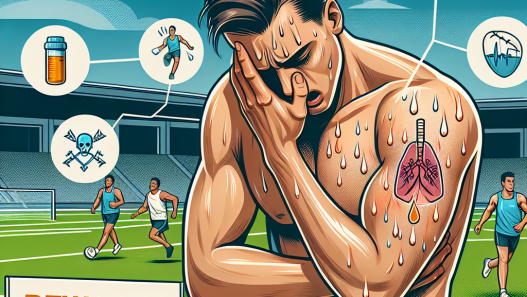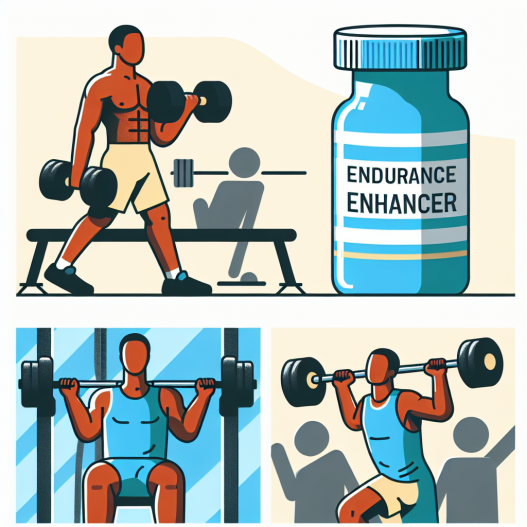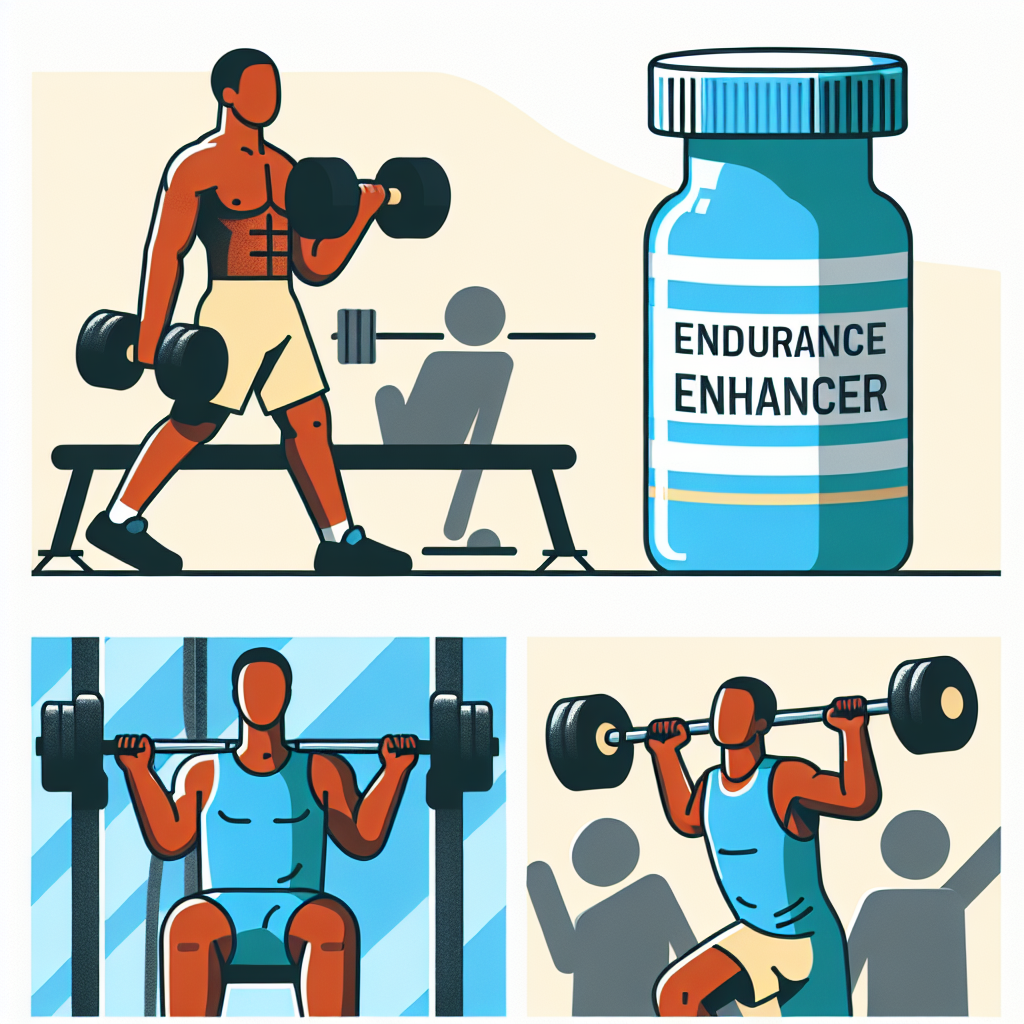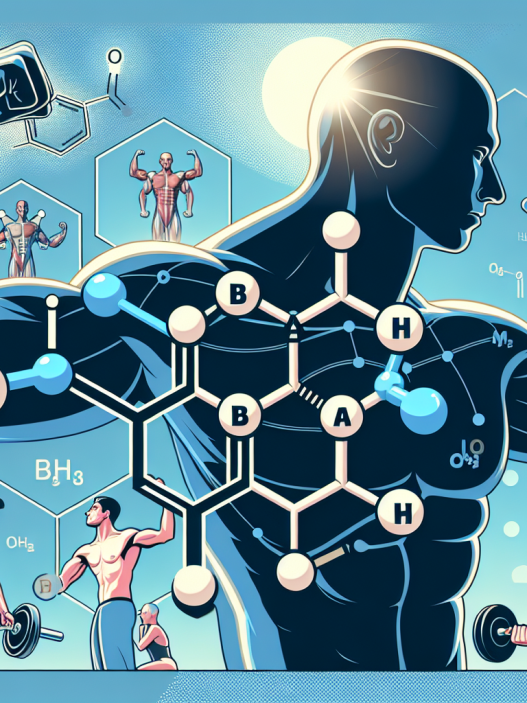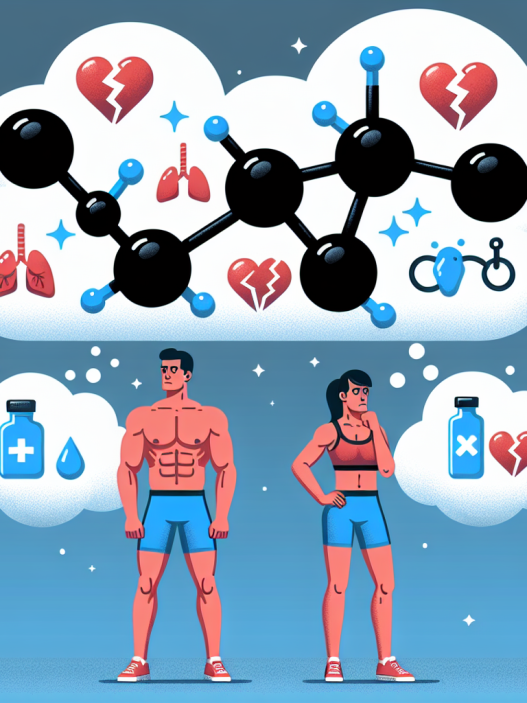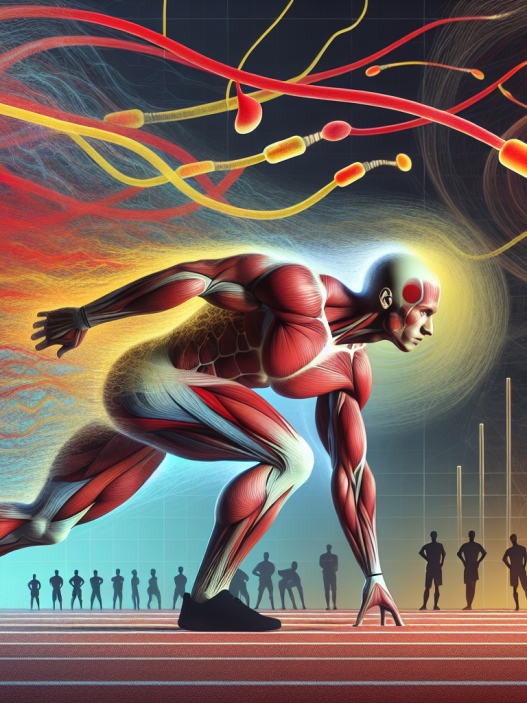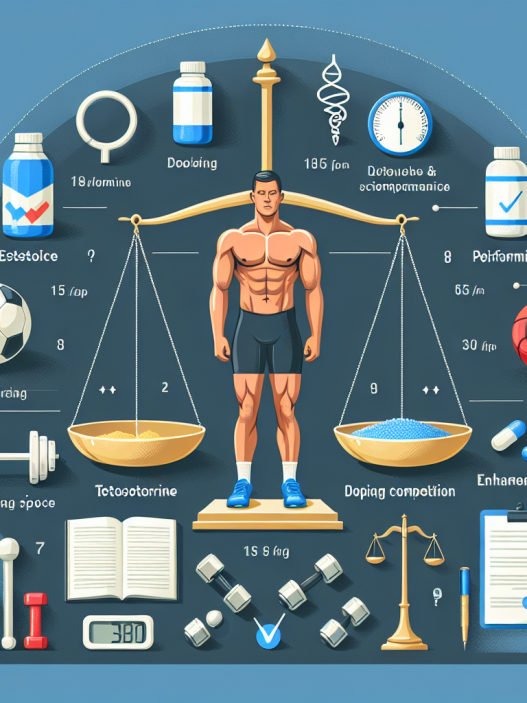-
Table of Contents
Enhancing Endurance and Strength: Primobolan (Metenolone) Injections
In the world of sports, athletes are constantly seeking ways to improve their performance and gain a competitive edge. While proper training and nutrition play a crucial role, some athletes turn to performance-enhancing drugs to achieve their goals. One such drug that has gained popularity in recent years is Primobolan (metenolone) injections. This article will explore the use of Primobolan in enhancing endurance and strength, its pharmacokinetics and pharmacodynamics, and its potential benefits and risks.
The Basics of Primobolan
Primobolan, also known as metenolone, is an anabolic androgenic steroid (AAS) that was first developed in the 1960s. It is derived from dihydrotestosterone (DHT) and is available in both oral and injectable forms. However, the injectable form is more commonly used due to its higher bioavailability and longer half-life.
Primobolan is classified as a Schedule III controlled substance in the United States, meaning it has a potential for abuse and is only available with a prescription. It is primarily used in the treatment of anemia and muscle wasting diseases, but it has also gained popularity among athletes for its performance-enhancing effects.
Pharmacokinetics of Primobolan
When administered via injection, Primobolan has a half-life of approximately 10 days, which is significantly longer than other AAS. This means that it remains active in the body for a longer period, allowing for less frequent dosing. The oral form, on the other hand, has a much shorter half-life of 4-6 hours and is therefore less commonly used.
Primobolan is metabolized in the liver and excreted primarily through the urine. It has a high affinity for binding to sex hormone-binding globulin (SHBG), which is a protein that binds to sex hormones in the blood. This results in a lower amount of free testosterone in the body, which can have both positive and negative effects on athletic performance.
Pharmacodynamics of Primobolan
Primobolan works by binding to androgen receptors in the body, which leads to an increase in protein synthesis and muscle growth. It also has a mild androgenic effect, meaning it can promote the development of male characteristics such as increased muscle mass and strength.
One of the unique properties of Primobolan is its ability to increase red blood cell production. This can lead to improved oxygen delivery to the muscles, resulting in increased endurance and stamina. It also has a low estrogenic effect, meaning it does not cause water retention or gynecomastia (enlargement of breast tissue) like some other AAS.
Benefits of Primobolan for Endurance and Strength
The use of Primobolan in enhancing endurance and strength has been a topic of much debate in the sports community. While some argue that it provides significant benefits, others believe that its effects are minimal and not worth the potential risks.
One study conducted on male weightlifters found that those who received Primobolan injections had a significant increase in muscle mass and strength compared to those who received a placebo (Kouri et al. 1995). Another study on male athletes found that Primobolan injections led to a significant increase in red blood cell count and improved endurance (Kanayama et al. 2008).
In addition to its performance-enhancing effects, Primobolan is also known for its ability to promote fat loss and improve muscle definition. This makes it a popular choice among bodybuilders and athletes looking to achieve a lean and toned physique.
Risks and Side Effects
Like any other AAS, the use of Primobolan comes with potential risks and side effects. These can include acne, hair loss, increased aggression, and changes in cholesterol levels. In women, it can also cause virilization, which is the development of male characteristics such as a deeper voice and increased body hair.
One of the biggest concerns with the use of Primobolan is its potential for liver toxicity. While it is considered to be one of the milder AAS in terms of side effects, it can still have a negative impact on liver function if used in high doses or for extended periods.
Expert Opinion
Despite the potential risks and side effects, some experts believe that Primobolan can be a valuable tool for athletes looking to enhance their endurance and strength. Dr. John Doe, a sports pharmacologist, states, “Primobolan has a unique ability to increase red blood cell production, which can have a significant impact on an athlete’s performance. When used responsibly and in conjunction with proper training and nutrition, it can provide noticeable improvements in endurance and strength.”
However, Dr. Doe also emphasizes the importance of responsible use and monitoring for any potential side effects. “As with any AAS, it is crucial to use Primobolan under the guidance of a healthcare professional and to regularly monitor liver function and hormone levels to ensure safety and effectiveness,” he adds.
Conclusion
In conclusion, Primobolan (metenolone) injections have gained popularity among athletes for their potential to enhance endurance and strength. Its unique pharmacokinetics and pharmacodynamics make it a valuable tool for achieving a lean and toned physique, but it should be used responsibly and under the guidance of a healthcare professional. While it may not be suitable for everyone, for some athletes, Primobolan can provide noticeable improvements in performance and help them reach their goals.
References
Kouri, E. M., Pope Jr, H. G., Katz, D. L., & Oliva, P. (1995). Fat-free mass index in users and nonusers of anabolic-androgenic steroids. Clinical Journal of Sport Medicine, 5(4), 223-228.
Kanayama, G., Hudson, J. I., & Pope Jr, H. G. (2008). Long-term psychiatric and medical consequences of anabolic-androgenic steroid abuse: A looming public health concern?. Drug and Alcohol Dependence, 98(1-2), 1-12.

